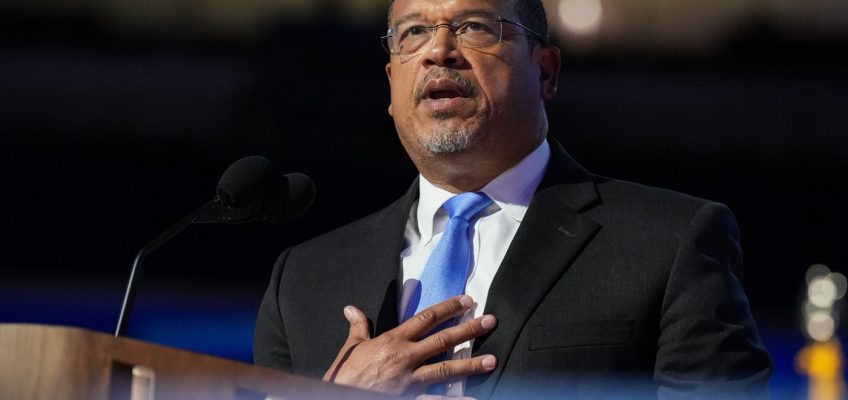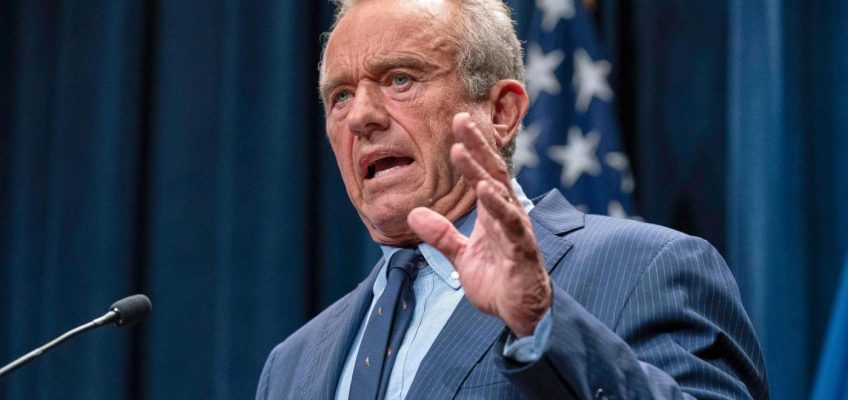WASHINGTON — U.S. health officials on Tuesday said they would phase out petroleum-based artificial colors in the nation’s food supply, potentially triggering an ingredients overhaul for scores of brightly hued products on American store shelves.
The federal Food and Drug Administration will take steps to eliminate the synthetic dyes by the end of 2026, FDA Commissioner Marty Makary said at a news conference. The agency will establish a standard and timeline for industry to switch to natural alternatives, revoke authorization for dyes not in production within coming weeks and take steps to remove remaining dyes on the market.
Makary said that removing artificial dyes would boost children’s health.
“For the last 50 years we have been running one of the largest uncontrolled scientific experiments in the world on our nation’s children without their consent,” Makary said.
For-profit immigration detention expands as Trump accelerates his deportation plans
Private security guards charged after woman was dragged out of chaotic Idaho town hall meeting
Tesla, hammered by protests and plummeting sales, to report 1st quarter performance
15 years after Deepwater Horizon oil spill, lawsuits stall and restoration is incomplete
60,000 Americans to lose their rental assistance and risk eviction unless Congress acts
Health advocates have long called for the removal of artificial dyes from foods, citing mixed studies indicating they can cause neurobehavioral problems, including hyperactivity and attention issues, in some children. The FDA has maintained that the approved dyes are safe and that “the totality of scientific evidence shows that most children have no adverse effects when consuming foods containing color additives.”
The FDA currently allows 36 food color additives, including eight synthetic dyes. In January, the agency announced that the dye known as Red 3 — used in candies, cakes and some medications — would be banned in food by 2027 because it caused cancer in laboratory rats.
Artificial dyes are used widely in U.S. foods. In Canada and in Europe — where artificial colors are required to carry warning labels — manufacturers mostly use natural substitutes. Several states, including California and West Virginia, have passed laws restricting the use of artificial colors in foods.
The announcement drew praise from advocates who say the dyes carry health risks and serve no purpose beyond the cosmetic.
“Their only purpose is to make food companies money,” said Dr. Peter Lurie, president of the Center for Science in the Public Interest and a former FDA official. “Food dyes help make ultraprocessed foods more attractive, especially to children, often by masking the absence of a colorful ingredient, like fruit.”
Removing artificial dyes from foods has long been a goal of so-called MAHA moms, key supporters of Health Secretary Robert F. Kennedy Jr. and his “Make America Healthy Again” initiatives. They were among protesters who signed petitions and rallied outside the Michigan headquarters of WK Kellogg Co. last year, demanding that the company remove artificial dyes from its breakfast cereals in the U.S.
The group included Vani Hari, a popular food activist known as the Food Babe, who previously pressured the Kraft Heinz company to remove artificial dyes from its macaroni and cheese. Hari spoke at Tuesday’s event.
She said the action marks “a new era” in safe food for children.
However, food manufacturers said the action would unfairly target highly regulated color additives long confirmed to be safe.
“There are not enough alternatives available to replace these products,” the International Association of Color Manufacturers said in a statement. “Supply chains will take an estimated five to 10 years to catch up and require importing more expensive ingredients grown in China, India and Mexico.”
A spokesperson for the National Confectioners Association, a trade group for makers of candy, gum and mints, said the industry “needs time to find safe and viable alternatives.”
Removing dyes from the food supply will not address the chief health problems that plague Americans, said Susan Mayne, a Yale University chronic disease expert and former director of the FDA’s food center.
“With every one of their announcements, they’re focusing in on something that’s not going to accomplish what they say it is,” Mayne said of Kennedy’s initiatives. “Most of these food dyes have been in our food supply for 100 years. … So why aren’t they driving toward reductions in things that do drive chronic disease rates?”
In the past, FDA officials said the threat of legal action from the food industry required the government to have significant scientific evidence before banning additives. Red 3 was banned from cosmetics more than three decades before it was stripped from food and medicine. It took five decades for the FDA to ban brominated vegetable oil because of health concerns.
But Lurie said industry officials might not challenge the Trump administration.
“They don’t want to get on the wrong side of a vindictive president,” he said.
Hours before the announcement, the International Dairy Foods Association said its members would voluntarily eliminate artificial colors in milk, cheese and yogurt products sold to U.S. school meal programs by July 2026. Most dairy products for schools don’t contain artificial colors, as most dairy processors have chosen not to use them or have already removed or replaced them, officials at the dairy trade group noted.
Some of the state laws banning synthetic dyes in school meals have aggressive timelines. West Virginia’s ban, for example, prohibits red, yellow, blue and green artificial dyes in school meals starting Aug. 1. A broader ban will extend the restrictions to all foods sold in the state on Jan. 1, 2028.
Many U.S. food companies are already reformulating their foods, according to Sensient Colors, one of the world’s largest producers of food dyes and flavorings. In place of synthetic dyes, food makers can use natural hues made from beets, algae and crushed insects and pigments from purple sweet potatoes, radishes and red cabbage.
Aleccia reported from California.
The Associated Press Health and Science Department receives support from the Howard Hughes Medical Institute’s Science and Educational Media Group and the Robert Wood Johnson Foundation. The AP is solely responsible for all content.




